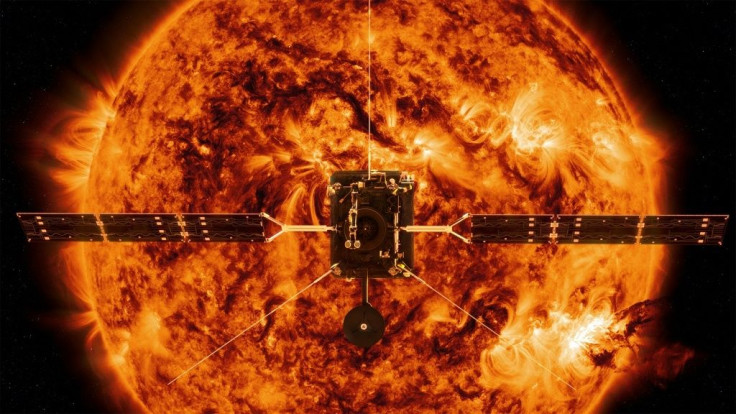'Mystery Solved': Solar Orbiter Sheds Light On Sun's Magnetic Field Phenomenon
KEY POINTS
- The mechanisms behind magnetic switchbacks have been a mystery for years
- Researchers recently reported the "first evidence of a magnetic switchback in the solar corona"
- The Solar Orbiter's observations match a proposed theory for the phenomenon
What is it that causes the Sun's magnetic field to suddenly switch? The mystery has been around for many years, but now, the Solar Orbiter may have just solved it.
The phenomenon, called magnetic switchbacks or solar switchbacks, is when there are "sudden and large deflections of the solar wind's magnetic field," the European Space Agency (ESA) noted in a news release. In other words, these are sudden reversals of the Sun's magnetic field, and they can last for a few seconds to a few hours before switching back to the normal direction.
This isn't exactly a new phenomenon. It was observed as far back as the 1970s by the Helios 1 and 2 spacecraft and then in the 1990s with the Ulysses spacecraft, according to the ESA. Observations of the phenomenon increased with the arrival of the Parker Solar Probe in 2018, but the exact mechanisms behind it have remained a mystery, though there have been previous ideas as to how they come about.
In a new study, published Monday in The Astrophysical Journal Letters, the researchers described the "first evidence of a magnetic switchback in the solar corona" as observed by the Solar Orbiter's Metis instrument while it was on the way to a close approach of the Sun on March 25.
During this approach, Metis captured a "distorted S-shaped kink" flowing off of the Sun, which has previously been linked to the phenomenon. This suggests that the instrument captured a switchback.
Daniele Telloni of the National Institute for Astrophysics-Astrophysical Observatory, one of the study authors and the one who first spotted the structure in the March 25 data, compared it with the image captured by the Extreme Ultraviolet Imager (EUI) instrument and found that it was happening above active region AR 12972.
Such active regions have been linked to magnetic activity and sunspots, the ESA explained. And the Solar Orbiter's observations happen to match the theory for the phenomenon that was proposed by Prof. Gary Zank of the University of Alabama.
In the theory, the idea is that these switchbacks have something to do with open and closed magnetic field lines. Closed field lines simply "arch up" into the Sun's atmosphere but come back down to the Sun, while open field lines actually erupt from the Sun and "connect with the interplanetary magnetic field of the Solar System," the ESA explained.
The theory suggests that the switchbacks happen when the closed and open magnetic fields interact.
"Interchange reconnection events can trigger the formation of magnetic field deflections, which propagate both outward and inward, whenever they are launched in the sub-Alfvénic flow," the researchers wrote. "The most extreme switchbacks take the characteristic S shape and are detected in situ as magnetic field reversals."
Based on the Solar Orbiter's stunning observations, it appears that the theory can actually "provide strong arguments" to explain this mystery.
☀️ #SolarOrbiter has made the first ever remote sensing observation of an S-shaped ‘switchback’ magnetic feature in the #SolarWind, a phenomenon that may be important in understanding the acceleration and heating of the solar wind 👉 https://t.co/1xlbvk9SAa pic.twitter.com/KgT7dUms25
— ESA's Solar Orbiter (@ESASolarOrbiter) September 12, 2022
"The first image from Metis that Daniele showed suggested to me almost immediately the cartoons that we had drawn in developing the mathematical model for a switchback," Zank said in the news release.
"I would say that this first image of a magnetic switchback in the solar corona has revealed the mystery of their origin," Telloni added.

© Copyright IBTimes 2025. All rights reserved.






















